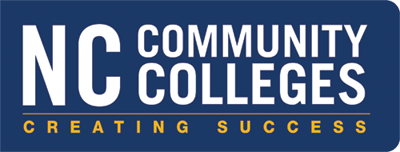The History
In the years following World War II, North Carolina began a rapid shift from an agricultural to an industrial economy. With that change came an awareness that a different kind of education was needed in the state. People who did not desire a four-year baccalaureate education nevertheless had the need for more than a high school diploma.
In 1950, the State Superintendent of Public Instruction authorized a study of the need for a system of tax-supported community colleges. The resulting report, by Dr. Allan S. Hurlburt, was published in 1952. It proposed a plan for development of state-supported community colleges. In 1957, the General Assembly adopted the first Community College Act and provided funding for community colleges.
The same (1957) General Assembly also provided funding to initiate a statewide system of Industrial Education Centers. These centers were to train adults and selected high school students in skills needed by industry. By 1961, there were five public junior colleges emphasizing arts and sciences, and seven industrial education centers focusing on technical and vocational education.
The need to coordinate these two post-high school education systems led Governor Terry Sanford to appoint the Governor's Commission on Education Beyond the High School (Irving Carlyle, chair). In 1962, this commission recommended that the two types of institutions be brought into one administrative organization under the State Board of Education and local boards of trustees. The resulting unified community college system would provide comprehensive post-high school education. One of the system's most important early advocates was Dr. Dallas Herring of Rose Hill, then chair of the State Board of Education.
In May 1963, the General Assembly, in line with the Carlyle Commission report, enacted into law G.S. 115A (later changed to 115D), which provided for the establishment of a Department of Community Colleges under the State Board of Education and for the administration of institutions in the Community College System. There were then 20 industrial education centers, six community colleges (three of which became four-year schools in 1963), and five extension units.
By 1966, there were 43 institutions with 28,250 full-time equivalent (FTE) enrollments. In 1969, there were 54 institutions with 59,329 FTE. The System had grown very rapidly, exceeding ten percent annual growth nearly every year until the late 1970s. In 1974-75, growth reached the 33 percent mark. The System continues to grow in enrollments nearly every year, but by much more modest margins. The number of colleges has not increased since Brunswick Community College became the 58th college in 1978. In 1991, the North Carolina Center for Applied Textile Technology became subject to the management of the North Carolina State Board of Community Colleges. In July 2005, Gaston College, part of the North Carolina Community College System, absorbed the textile center.
The original legislation placed the community college system under the purview of the State Board of Education, and created a State Department of Community Colleges. In the early years of the System, the State Board of Education Chair was Dallas Herring; David Bruton succeeded him in 1977.
In 1979, the General Assembly changed the state control of the system. Provision was made for a separate State Board of Community Colleges. The Board was appointed and organized in 1980, and met several times with the State Board of Education. The new Board assumed full responsibility for the system on January 1, 1981. The Board's first chairperson was Duke Power Company Executive Carl Horn. He was succeeded in 1983 by John A. Forlines, president of Bank of Granite and then by William F. Simpson in 1989. Lt. Governor Dennis A. Wicker served as chair from 1993 until 1999. Dr. G. Herman Porter, former president of Wayne Community College, served from 1999 until 2001. Businessman James J. Woody, Jr. of Roxboro served from 2001 until July 2005. Progress Energy executive Hilda Pinnix-Ragland served four terms from 2005-2013. She was succeeded as chair by Dr. Linwood Powell of Fayetteville, who served 2013-2016. Scott Shook of Greenville served from 2016-2019, and Dr. Breeden Blackwell of Fayetteville is the current chair of the board, having led the board since 2019.
The North Carolina Community College System has had 10 presidents: I. E. Ready (1963-1970), Ben E. Fountain, Jr. (1971-1978), Larry J. Blake (1979-1982), Robert W. Scott (1983-1995), Lloyd V. Hackley (1995-1997), Martin Lancaster (1997-2008), R. Scott Ralls (2008-2015), James C. (Jimmie) Williamson (2016-2017), Peter Hans (2018-2020), and Thomas A. Stith III began his tenure as the 10th president on January 11, 2021. Charles R. Holloman served in an acting capacity from September, 1978 to July, 1979, George Fouts served as interim president (2015-2016), Jennifer Haygood served as acting president (2017-2018), and Dr. Bill Carver served as interim president most recently (2020-21).
